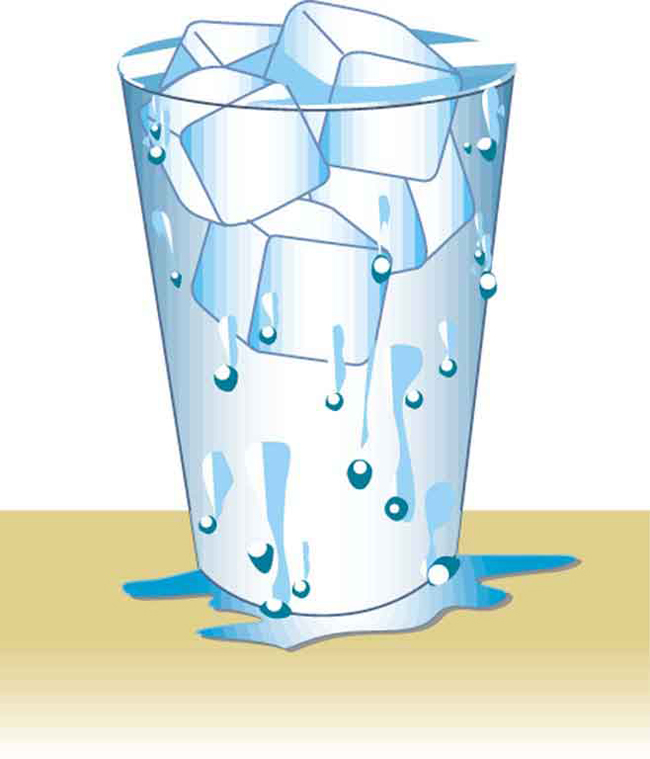| << Chapter < Page | Chapter >> Page > |
A reservoir has a surface area of and an average depth of 40.0 m. What mass of water is held behind the dam? (See [link] for a view of a large reservoir—the Three Gorges Dam site on the Yangtze River in central China.)
Strategy
We can calculate the volume of the reservoir from its dimensions, and find the density of water in [link] . Then the mass can be found from the definition of density
Solution
Solving equation for gives .
The volume of the reservoir is its surface area times its average depth :
The density of water from [link] is . Substituting and into the expression for mass gives
Discussion
A large reservoir contains a very large mass of water. In this example, the weight of the water in the reservoir is , where is the acceleration due to the Earth’s gravity (about ). It is reasonable to ask whether the dam must supply a force equal to this tremendous weight. The answer is no. As we shall see in the following sections, the force the dam must supply can be much smaller than the weight of the water it holds back.

Approximately how does the density of air vary with altitude?
Give an example in which density is used to identify the substance composing an object. Would information in addition to average density be needed to identify the substances in an object composed of more than one material?
[link] shows a glass of ice water filled to the brim. Will the water overflow when the ice melts? Explain your answer.

Gold is sold by the troy ounce (31.103 g). What is the volume of 1 troy ounce of pure gold?
Mercury is commonly supplied in flasks containing 34.5 kg (about 76 lb). What is the volume in liters of this much mercury?
(a) What is the mass of a deep breath of air having a volume of 2.00 L? (b) Discuss the effect taking such a breath has on your body’s volume and density.
(a) 2.58 g
(b) The volume of your body increases by the volume of air you inhale. The average density of your body decreases when you take a deep breath, because the density of air is substantially smaller than the average density of the body before you took the deep breath.
A straightforward method of finding the density of an object is to measure its mass and then measure its volume by submerging it in a graduated cylinder. What is the density of a 240-g rock that displaces of water? (Note that the accuracy and practical applications of this technique are more limited than a variety of others that are based on Archimedes’ principle.)
Suppose you have a coffee mug with a circular cross section and vertical sides (uniform radius). What is its inside radius if it holds 375 g of coffee when filled to a depth of 7.50 cm? Assume coffee has the same density as water.
(a) A rectangular gasoline tank can hold 50.0 kg of gasoline when full. What is the depth of the tank if it is 0.500-m wide by 0.900-m long? (b) Discuss whether this gas tank has a reasonable volume for a passenger car.
(a) 0.163 m
(b) Equivalent to 19.4 gallons, which is reasonable
A trash compactor can reduce the volume of its contents to 0.350 their original value. Neglecting the mass of air expelled, by what factor is the density of the rubbish increased?
A 2.50-kg steel gasoline can holds 20.0 L of gasoline when full. What is the average density of the full gas can, taking into account the volume occupied by steel as well as by gasoline?
What is the density of 18.0-karat gold that is a mixture of 18 parts gold, 5 parts silver, and 1 part copper? (These values are parts by mass, not volume.) Assume that this is a simple mixture having an average density equal to the weighted densities of its constituents.
There is relatively little empty space between atoms in solids and liquids, so that the average density of an atom is about the same as matter on a macroscopic scale—approximately . The nucleus of an atom has a radius about that of the atom and contains nearly all the mass of the entire atom. (a) What is the approximate density of a nucleus? (b) One remnant of a supernova, called a neutron star, can have the density of a nucleus. What would be the radius of a neutron star with a mass 10 times that of our Sun (the radius of the Sun is )?
(a)
(b)

Notification Switch
Would you like to follow the 'College physics' conversation and receive update notifications?